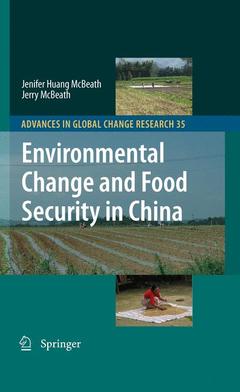Description
Environmental Change and Food Security in China, 2010
Advances in Global Change Research Series, Vol. 35
Authors: Huang McBeath Jenifer, McBeath Jerry
Language: English
Subjects for Environmental Change and Food Security in China:
Approximative price 158.24 €
In Print (Delivery period: 15 days).
Add to cartPublication date: 04-2010
340 p. · 15.5x23.5 cm · Hardback
Approximative price 158.24 €
In Print (Delivery period: 15 days).
Add to cartPublication date: 05-2012
340 p. · 15.5x23.5 cm · Paperback
Description
/li>Contents
/li>Comment
/li>
Explores indirect and direct relationships between environmental degradation and food security
Comprehensive treatment of major factors influencing China’s food production, consumption and control systems
Analyses of actors (national and sub-national officials, scientists, non-governmental organizations, media) involved in food policy formation and implementation
Examination of recent controversies—GMOs and human health, "tainted" food product
Includes supplementary material: sn.pub/extras
These books may interest you

Security and Environment in the MediterraneanConceptualising Security and Environmental Conflicts 295.39 €

The Evolving Sphere of Food Security 164.74 €


